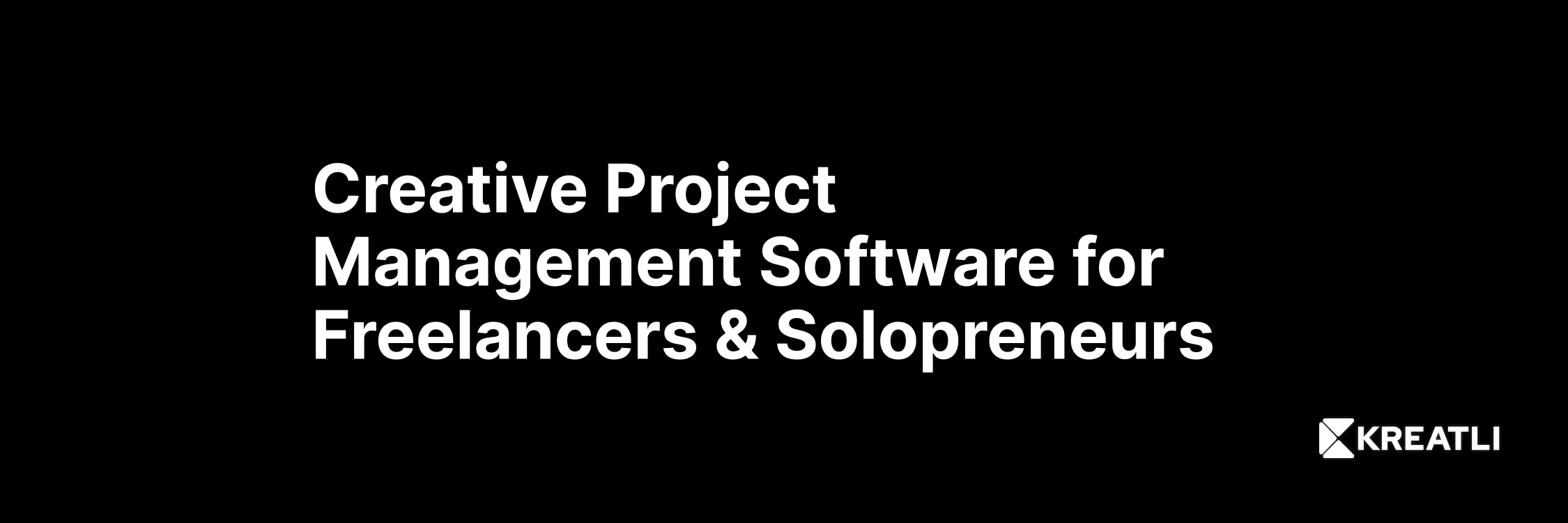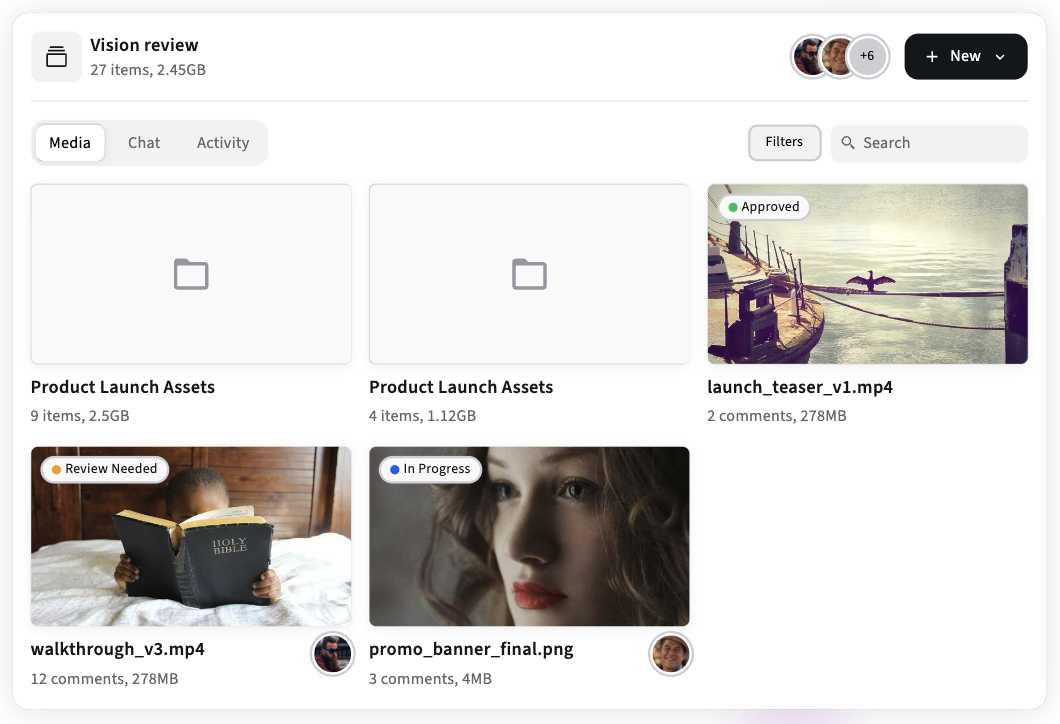Best Creative Project Management Software for Freelancers & Solopreneurs
We compare the best creative project management tools for freelancers and solopreneurs, with workflows, templates, pricing signals, and a 30-day onboarding plan so you can pick and ship faster. Includes real-world tips and why a production management platform may pay off.

Why freelancers need a focused PM stack
As a freelancer or solopreneur, your tools should make you faster, not busier. The right creative project management software keeps briefs, revisions, invoices, and approvals in one clean flow so you can spend more time doing creative work and less time chasing decisions. In this guide we compare the best options for independent creatives, explain which features actually move the needle, provide plug-and-play templates, and give a 30-day onboarding plan to test a new stack quickly.
What small creatives actually need from PM software
Before we list tools, let us be explicit about needs. The best tool for a freelancer will do the following well:
Keep briefs, assets, and approvals attached to the project.
Make client reviews painless with easy playback and timecode comments.
Automate repetitive admin tasks like status updates, simple invoices, or deliverable checklists.
Require minimal setup and have predictable pricing.
Play nicely with the tools you already use for editing and design.
If a tool is powerful but takes weeks of setup, it is a mismatch. Prioritize quick wins.
Top picks summary
Kreatli - production management platform that bundles project briefs, proxy review, approvals, and simple delivery tools. Combining all the crucial features creative teams need in one place. Best when you want one product to handle the entire brief-to-delivery flow.
Notion - the best all-purpose workspace for notes, briefs, and lightweight project tracking. Great for solo creators who want a single hub that doubles as a portfolio and knowledge base.
Trello - simple Kanban boards that work for single-person pipelines and client-facing boards. Very low friction to adopt.
Airtable - spreadsheet-database hybrid useful for asset catalogs, simple production trackers, and light automation.
ClickUp - a highly configurable all-in-one app for solo pros who want task automation, docs, and time tracking without many third-party tools.
Frame.io / Vimeo Review - use these primarily for high-fidelity video reviews when clients demand browser-based proxy playback.
We include external links so you can jump straight to vendor docs and pricing pages.
How to choose: the practical checklist
Score candidate tools on these dimensions. If a tool scores well on the first three, it is a good fit for most freelancers.
Time-to-productivity - Can you be productive in one day or less?
Review Experience - Does it support proxy playback and timecode comments or integrate with a player that does?
Pricing predictability - Is pricing simple and affordable at a single-user level?
Automation - Are there templates, simple automations, or Zapier integrations to reduce admin?
Exportability - Can you export project data and assets easily if you switch tools later?
Mobile usability - Can clients review on phones without friction?
Security essentials - MFA, share link control, and password-protected reviews when needed.
Weight each item for your priorities. For example, time-to-productivity and review experience should account for at least half of your decision weight.
Deep dives: what each tool is best at
1. Kreatli - production management platform (one-stop for production)
What it does well
Keeps brief, proxies, comments, and approvals together in one project.
Branded review pages and approval buttons reduce ambiguity on sign-off.
Project-scoped permissions make guest reviews safe and simple.
Why a freelancer might pick it
If you run consistent client reviews and want a single interface that handles playback, comments, approvals, and delivery receipts, a production management platform can shave hours from every project.
Good for
Freelancers with regular clients, small agencies, and solopreneurs who want to present a professional, repeatable workflow.
2. Notion - documentation-first workspace
What it does well
Fast briefs, inline templates, and internal knowledge base.
Lightweight project boards, linked databases, and public pages for client-facing briefs.
Why a freelancer might pick it
If you value clarity in briefs, want to publish case studies, or need a single hub for contract templates and onboarding docs, Notion is both cheap and flexible.
Good for
Designers, consultants, and creators whose work is primarily documentable and less dependent on high-fidelity video proxy playback.
3. Trello - simple Kanban boards
What it does well
Extremely easy to set up with visual columns and clear status.
Good for simple one-person pipelines and for exposing a board to clients.
Why a freelancer might pick it
If you want a simple visual tracker and don’t need integrated proxy playback, Trello is fast and free for basic use.
Good for
Photographers, motion designers on small projects, and solo producers.
4. Airtable - searchable asset index and lightweight MAM alternative
What it does well
Media-friendly records, thumbnail previews, and filterable views.
Automations can generate statuses or reminders.
Why a freelancer might pick it
If reuse and discoverability matter, use Airtable to index clips, stills, and deliverables alongside your projects.
Good for
Freelancers who accumulate a catalog of assets and want to reuse footage or design templates easily.
5. ClickUp - deep feature set, one-app approach
What it does well
Task automations, time tracking, docs, and a generous feature set for solo power users.
Good templates for client onboarding and recurring work.
Why a freelancer might pick it
If you want to replace multiple small apps with a single tool and you enjoy configuring automations, ClickUp is compelling.
Good for
Solopreneurs who offer retainer services and need to manage multiple simultaneous clients.
6. Frame.io / Vimeo Review - if you need high-fidelity video reviews
What they do well
Proxies, frame-accurate comments, and integration with NLEs.
Optimized playback and review UX for video clients.
Why a freelancer might pick them
If your reviews are video-heavy and clients demand frame-accurate notes, these players reduce ambiguity and rework.
Good for
Freelance editors and motion designers delivering long-form or high-resolution video.
Pricing signals and how to model costs
When pricing small-scale tools, look beyond the headline seat price.
Free tiers are useful for single-person trials but verify storage limits.
Seat vs storage: Some platforms charge per seat, others mainly for storage. If you upload many large files, storage-based pricing matters most.
Per-transfer fees: For large masters, factor in MASV or cloud egress fees.
Integration tiers: API access, automated exports, or SSO are often higher-tier features.
Model a simple 12-month case: base tool + 1 TB of active storage + 500 GB transfer. Run the numbers and compare to the value of the time you will save each month.
Plug-and-play templates: brief, review, delivery
Use these templates to get started fast. Copy these into your chosen tool.
Brief (paste into Notion or Kreatli)
Project name:
One-line objective:
Deliverables: format, length, aspect ratio, codecs
Deadline & embargo: date/time
Key messages for audience: 3 bullets
References: links
Approval owner: name/email
Budget & change-order rules: quick numbers
Review brief (attach to every review link)
Focus items: story, pacing, audio levels
How to comment: timecode-pinned only
Review window: 48–72 hours
Approver: name
Delivery checklist
Final master delivered via transfer (link + receipt).
Derivatives created and uploaded.
Invoice issued with delivery receipt attached.
Project archived and indexed in Airtable for reuse.
30-day onboarding plan
Week 0 - Choose and configure
Pick one primary tool and one review player if needed. Import the brief and review templates.
Week 1 - First project
Run one small client project end-to-end with the tool. Use templates for brief and review.
Week 2 - Review & tune
Collect team and client feedback on ease of use, playback, and comment clarity. Tweak templates.
Week 3 - Second project
Run a slightly larger project and test automation (reminders, delivery receipts).
Week 4 - Decide
Compare time saved, client onboarding time, and any licensing surprises. Keep the tool that hits your KPIs.
KPIs to track
Time-to-first-comment, review rounds per deliverable, onboarding time for new clients.
When to consider a production management platform
For many freelancers a small stack of Notion + Trello + Airtable works well. Consider a production management platform like Kreatli when:
You regularly run client review sessions and want an integrated playback plus approval surface.
You want to keep project-related comments, media, and chats in one single place.
You are scaling into small team work and prefer a single vendor rather than stitching multiple tools.
A production management platform may cost more per month than individual apps but can reduce friction and make client processes feel premium.
Quick FAQ
Q: What is the simplest stack to start with?
A: Notion for briefs and knowledge, Trello for Kanban, and Airtable for asset indexing. Add a video review player only when needed.
Q: Do clients need accounts?
A: No. Choose tools that offer guest links or public review pages so clients can comment without creating accounts (like Kreatli).
Q: How do I keep costs down?
A: Use free tiers while piloting, archive large masters to low-cost storage, and track transfer volumes before purchasing large transfer plans.
Conclusion
Freelancers and solopreneurs win by picking tools that make feedback clear, automate repetitive admin, and keep costs predictable. Start with lightweight tools like Notion, Trello, and Airtable, add a dedicated review player when video is central, and consider a production management platform if you want a single product to own the entire brief-to-delivery flow. Run the 30-day plan above, measure time-to-first-comment and review rounds, and choose the tool that saves you the most time per project.
If you want to test a single integrated workflow that handles briefs, proxy review, and approvals, start a free trial with Kreatli and run the 30-day onboarding plan above.
Can Kreatli become your Production Management Platform?
Keep project-related comments, media, and chats in one single place.
